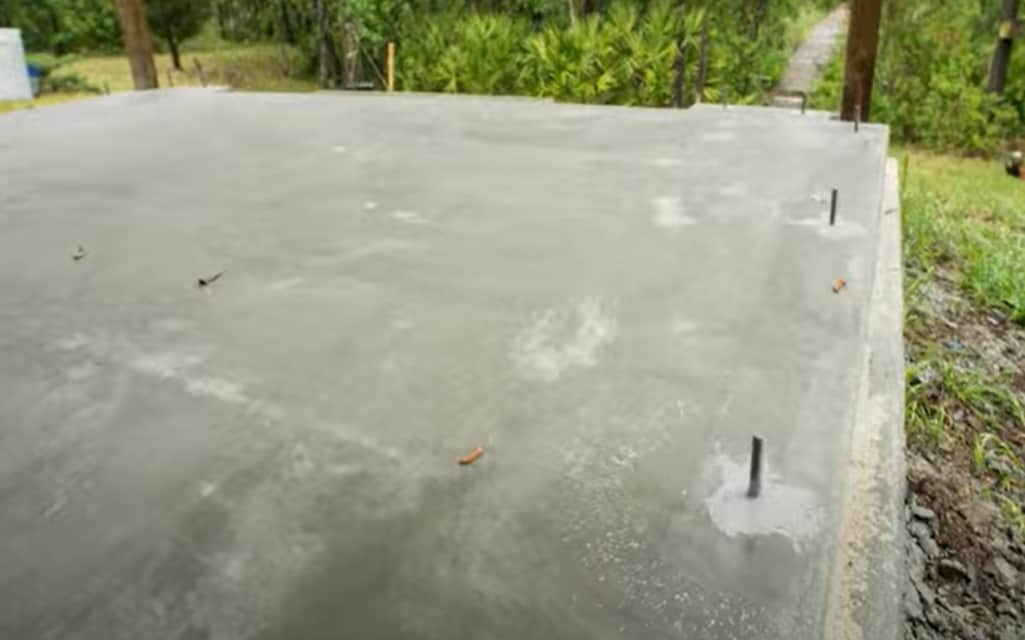In most concrete fastener applications, a connection is maintained through a proper tension between the installation material and the inserted portion of the fastener. Concrete anchors will usually do this through the structure of their threads or expansion actions, as in the case of nail-in or sleeve anchors. There is one type of concrete anchor that delivers an extra secure hold. It’s known as the epoxy anchor.
Epoxy anchors work in many applications that need an exceptionally reliable installation but where installation tools or mechanical anchors will not work. Epoxy anchors, also called chemical or adhesive anchors, are not just fasteners, but a special combination of an anchor and resin, which creates a strong and cohesive bond with concrete. They can be used in many places where standard anchors would not work, such as in cracked or thinner concrete, overhead placements, and softer materials, like brick and tile.
These anchors will deliver many advantages, but they are not flawless. There are issues that can cause epoxy anchors to fail. Here are a few common mistakes that should be avoided when using these fasteners.
Issues With The Installation Site
As with most construction anchors, epoxy anchors are meant to be installed into tapped or pre-drilled holes. Drilling to fit the diameter and length of the anchor is critical to a reliable installation. This is especially true for epoxy anchors, as one of the leading reasons for failure is insufficient embedment depth. The tapped hole must be deep enough to accommodate the resin as well as the anchor. This is very important for fostering a sufficient and long-lasting bond with the surrounding concrete. It will also ensure the anchor will deliver the right hold for the application.
Another critical step in installing epoxy anchors is to make sure dust, dirt, and other particles have been thoroughly cleaned from the hole before the anchor and epoxy are placed. All holes should be vacuumed just prior to installation. They should also be completely dry. Build-up debris and particles and the presence of moisture can interfere with the curing of the epoxy. This means the necessary bond between the resin and the concrete will not be secure.
Issues With The Curing Process
Even if the installation site is prepared properly, faults can still occur if there are problems during the curing process. Epoxy anchors facilitate a quick and easy installation, but there are a number of factors that need to line up. This includes the proper consistency and ratios of the acrylic epoxy and the curing agent. Incorrect ratios will amount to resin that becomes weak, brittle, or that never fully cures.
Many epoxy anchors are provided in an easy-to-dispense cartridge, which can prevent ratio and mixing problems. AC 100 epoxy and HY200 epoxy anchors, for example, are offered in special containers that help to ensure a more efficient and consistent insertion with less mix-ratio sensitivity.
Even with easy installation methods, other factors that interfere with curing include temperature, humidity, and time. Almost all epoxy anchor kits will indicate ideal curing conditions related to surface and ambient temperature ranges, as well as humidity. In general, resins will cure best in moderately warmer conditions and when the installation temperature is consistent with the temperature at which the epoxy anchor cartridges are stored. Colder temperatures will amount to a slower curing process and extreme cold could prevent the epoxy from curing completely.
In addition to temperature, make sure the epoxy anchor is given ample time to cure without being disturbed. Depending on the product, curing time can range from several hours or several days. Attempting to use the anchor prematurely can cause the installation to fail.
Mismatching Product With Job Demands
While epoxy anchors are versatile, they are still light-to-moderate duty components. If they are used in applications that calls for high-strength, heavy-duty mechanical anchors, they may fail. There can also be issues if the epoxy formula is not correctly matched to the job parameters. For example, A7+ epoxy anchors can be used with treated rod or rebar, but other acrylic formulas are not suitable for such pairings. This is why it’s important to carefully evaluate the parameters of the job and choose an epoxy anchors formula that meets those requirements.



